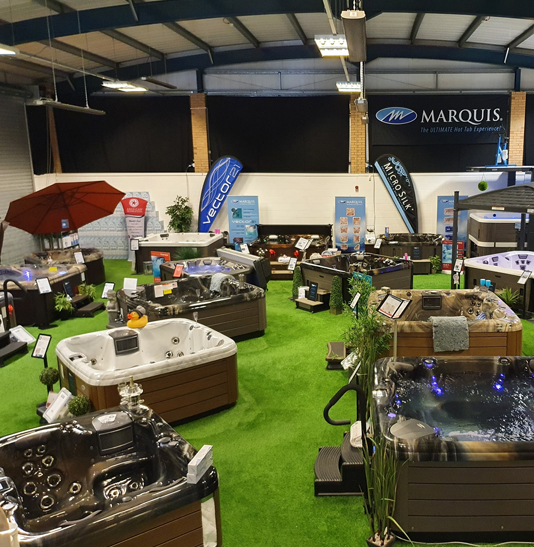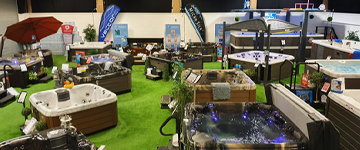The Complete Hot Tub Maintenance Guide 2024

Hot Tubs provide a luxurious and relaxing retreat right in the comfort of your own home. Whether you’re soaking in the warm water after a long day or enjoying a hydrotherapy session, it’s essential to maintain your Hot Tub properly. By following a regular Hot Tub maintenance routine, you can ensure that your spa remains clean, hygienic, and ready for use whenever you desire a soothing soak. In this comprehensive guide, we will walk you through the key steps and best practices for Hot Tub maintenance. From water balance and sanitisation to filter cleaning and shell maintenance, we’ve got you covered.
Proper maintenance is crucial to keep your Hot Tub clean, safe, and in optimal working condition. Regular care and maintenance will ensure that your Hot Tub provides years of enjoyment.
Why Hot Tub Maintenance is so important?
Before delving into the details of Hot Tub maintenance, let’s understand why it is crucial to keep your Spa in pristine condition. Neglecting Hot Tub maintenance can lead to a host of problems, compromising the enjoyment, longevity, and safety of your Hot Tub. Some of the key reasons why Hot Tub maintenance is so important are:
Water quality
Regular maintenance ensures that the water in your Hot Tub remains clean, clear, and free from any contaminants. Failure to maintain the water correctly can result in cloudy water, unpleasant smells, and even the growth of harmful bacteria.
Equipment longevity
A well-maintained Hot Tub will be kinder to its internal components such as pumps and filters. By adhering to a regular maintenance schedule, you can extend the lifespan of the Spa and avoid expensive repairs or replacements.
Bather safety
Clean and correctly sanitised Hot Tub water is essential for the health and safety of anyone who uses it. Skin irritations, infections, and other health problems can occur if Hot Tub maintenance is neglected.
Optimal performance
Regular maintenance ensures that your Hot Tub will perform at its best. From water temperature to jet performance a well-maintained Spa insures you will continue to receive a superior Hot Tub experience.
Part 1 - Water Balance
Maintaining balanced water is the foundation of Hot Tub maintenance. It involves ensuring that the pH, alkalinity, and calcium hardness levels are within the correct parameters. Correct water balance not only enhances the effectiveness of sanitisers but also prevents corrosion, scale formation, and cloudy water. Let’s explore the key factors of water balance.
pH Level
The pH level measures the acidity or alkalinity of the water. It is crucial to keep the pH within the recommended range of 7.0 to 7.6. A low pH level can cause corrosion of metal parts, while a high pH level can lead to scale formation and reduced sanitiser effectiveness. Test your Hot Tub water regularly using pH Test Strips, or a Testing Kit then adjust the pH as needed. The maximum level of Total Dissolved Solids before a water change is needed is 1,500mg/l.
Total Alkalinity
Total alkalinity helps stabilise the pH level and prevent rapid fluctuations. The ideal total alkalinity range for Hot Tubs is 80-120 parts per million (ppm). Low alkalinity can result in pH instability, while high alkalinity can cause cloudy water and reduced sanitiser effectiveness. Use an alkalinity increaser or decreaser to adjust the total alkalinity level as necessary.
Calcium Hardness
Calcium hardness refers to the level of dissolved calcium in the water. The recommended calcium hardness range for Hot Tubs is 150-250 ppm. Low calcium hardness can lead to equipment corrosion, while high levels can cause scale formation. Use a calcium increaser or reducer to maintain the appropriate calcium hardness level.
Total Dissolved Solids
Total Dissolved Solids (TDS) are the dissolved solid matter in the Hot Tub water. This includes contaminants such as cosmetics and deodorant, and even water treatment chemicals. Basically anything added to the Hot Tub water. The maximum level of Total Dissolved Solids before the water needs changing is 1,500mg/l.
Sanitisers: Keeping Your Hot Tub Water Clean and Safe
Sanitising your Hot Tub water is crucial for maintaining clean and bacteria-free water. Sanitisers help eliminate harmful micro organisms and prevent the growth of algae. There are several options available for Hot Tub sanitisation including Chlorine and Bromine, which according to BISHTA Standards (based on PWTAG and HSG282) are the only recommended sanitisers. There are also secondary systems like Ozone or UV.
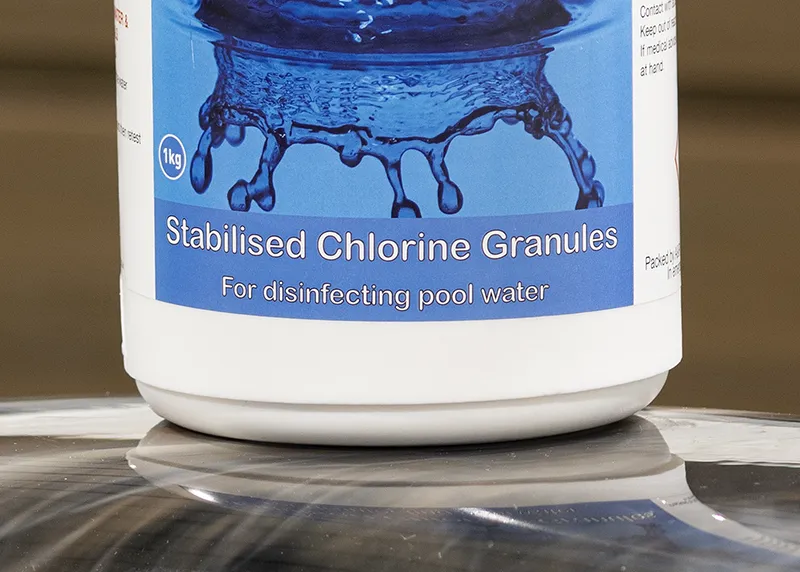
Chlorine
Chlorine is a widely used sanitiser for Hot Tubs and the most well-known. It effectively kills bacteria, viruses, and algae. Chlorine is available in various forms, including granules, tablets, or liquid. Follow the manufacturer’s instructions for adding Chlorine to your Hot Tub and maintain the recommended Chlorine residual level.

Bromine
Bromine is an alternative sanitiser that is often preferred by Hot Tub owners due to its stability and effectiveness at higher temperatures. Bromine tablets or granules can be used to sanitise your Hot Tub water. Like Chlorine, maintain the recommended Bromine residual level for optimal sanitisation.
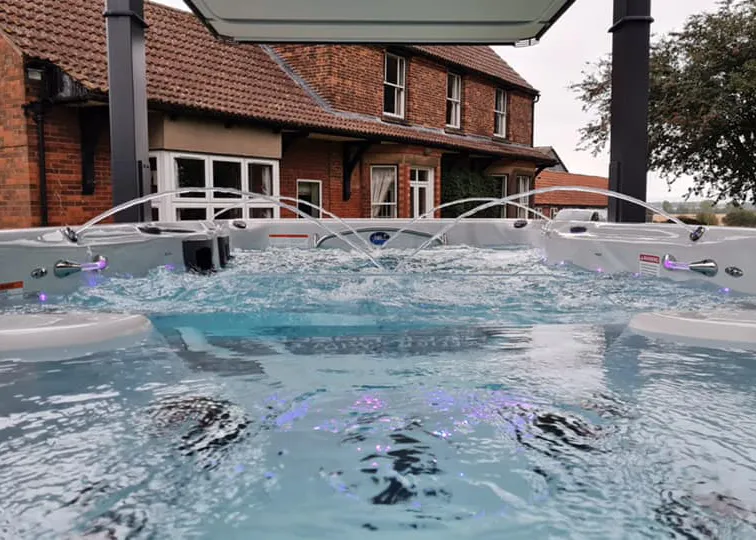
Additional Sanitisers
In addition to Chlorine and Bromine, there are alternative sanitisation methods available for Hot Tubs. Ozone and UV systems are becoming increasingly popular as they provide an additional layer of sanitisation without the need for as many chemicals. These systems are built into some higher end Hot Tubs.
Regardless of the sanitiser you choose, it’s essential to regularly test the sanitiser levels to ensure they are within the recommended range. There should always be a measurable residual disinfectant in the Hot Tub. This will help keep your Hot Tub water clean, clear, and safe for use.
Shocking the Water: Oxidising Contaminants

In addition to regular sanitising your Spa, shocking the water is an important step in Hot Tub maintenance. Shocking, also known as oxidising, reactivates the sanitisers making them more effective. It helps eliminate organic contaminants, such as body oils, sweat, and lotions, that can build up in the water.
There are different types of shock available for Hot Tubs, including Chlorine-based shock, non-Chlorine shock, and MPS (monopersulfate) shock. A good local Hot Tub retailer will be able to discuss the options with you.
Shocking frequency depends on several factors, including Hot Tub usage, bather load, and water condition.
Step 1
First test the water to ensure the sanitiser levels are within the recommended parameters.
Step 2
Adjust the pH level if required.
Step 3
Add the shock treatment to the Hot Tub as per manufacturer’s instructions.
Step 4
Run the jets for 15 minutes to circulate the shock through the Hot Tubs water.
Step 5
Let the water rest for before using the Hot Tub.
Regular shocking helps keep your Hot Tub water fresh, clear, free from contaminants, and safe.
Filter Cleaning: Maintaining Efficient Filtration
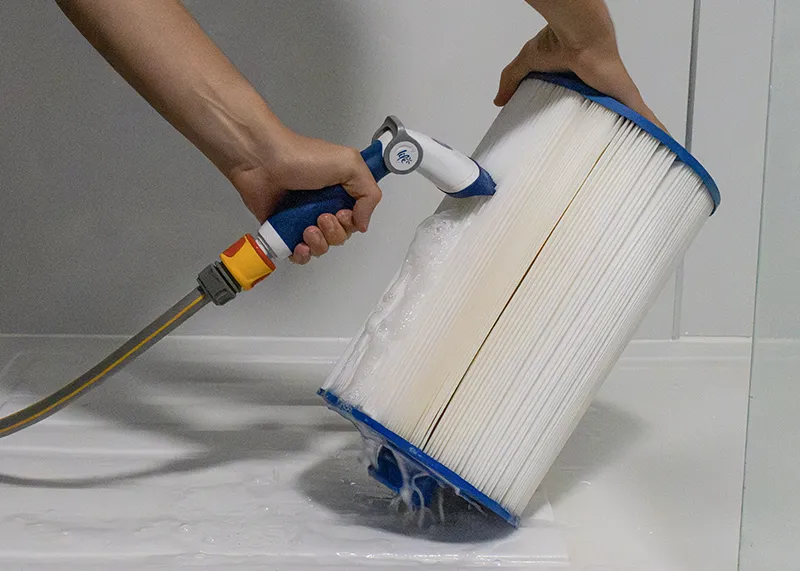
Hot Tub filters play a vital role in maintaining clean and clear water by trapping debris, dirt, and other particles. Over time, filters can become clogged and less effective, reducing water circulation and filtration efficiency. Regular filter cleaning is essential to ensure optimal performance.
Step 1 – Rinse the Filters
Start by removing the filters from your Hot Tub and then rinsing them thoroughly with clean water to remove any loose debris or dirt. Use a hose with moderate water pressure to avoid damaging the filter.
Step 2 – Use a Filter Cleaner
After rinsing, apply a filter cleaner specifically designed for Hot Tub filters. Follow the manufacturer’s instructions for the appropriate amount of cleaner to use. Thoroughly spray the filter, paying attention to all the pleats and crevices.
Step 3 – Soak the Filters
For a deep clean, soak the filters in a Hot Tub filter cleaning solution. This will help remove any stubborn contaminants that may be trapped in the filter media. Follow the recommended soaking time specified by the filter cleaner manufacturer.
Step 4 – Rinse and Reinstall the Filters
After soaking, thoroughly rinse the filters to remove any residual cleaning solution. Ensure all traces of the cleaner are removed before reinstalling the filters in the Spa.
Regular filter cleaning and maintenance will ensure optimal water circulation, filtration, and overall hot tub performance.
Part 2 - Shell Maintenance
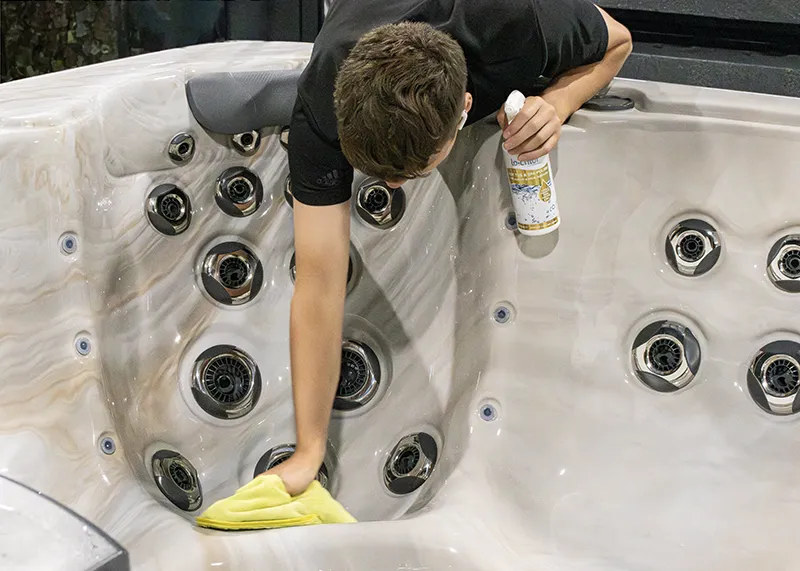
In addition to water balance, sanitisation, and filter cleaning, maintaining the shell of your Hot Tub is essential for a pristine Spa experience. Here are some key tips for Hot Tub shell maintenance:
Regular Wipe Down
Weekly or bi-weekly wipe downs of the Hot Tub shell help prevent the build-up of dirt, oils, and other contaminants. Use a soft sponge or cloth to clean the shell, paying extra attention to areas around the waterline and any grooves or crevices.
Deep Cleaning
Periodically, it is necessary to perform a deep cleaning of the Hot Tub shell. This involves draining the Hot Tub, removing any debris or dirt, and using a non-abrasive cleaner specifically designed for Hot Tubs. Follow the manufacturer’s instructions for the cleaning product and use a soft brush or cloth to scrub the shell gently.
Protecting the Shell
To keep the Hot Tub shell looking new and prevent damage, it’s important to use appropriate cleaning products and avoid abrasive materials or harsh chemicals. Consult the Hot Tub manufacturer’s guidelines for recommended cleaning products to protect the shell’s finish.
Cover Maintenance
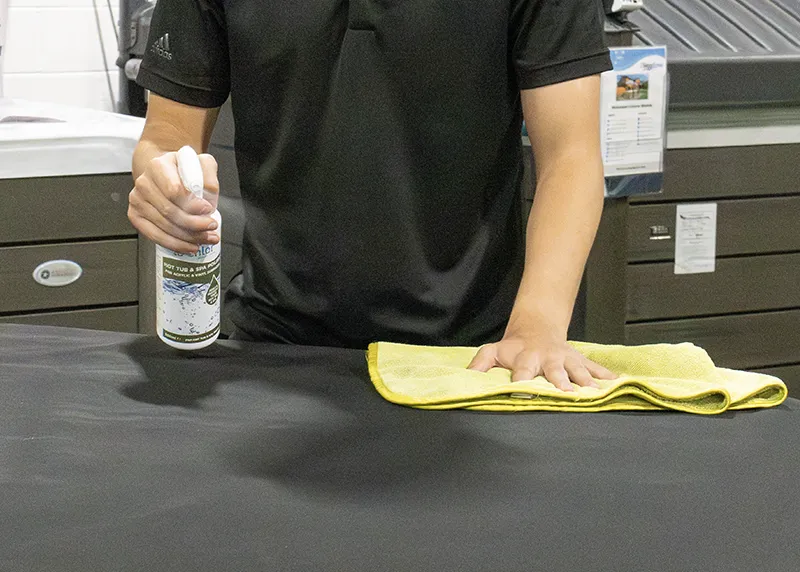
To keep the Hot Tub shell looking new and prevent damage, it’s important to use appropriate cleaning products and avoid abrasive materials or harsh chemicals. Consult the Hot Tub manufacturer’s guidelines for recommended cleaning products to protect the shell’s finish.
Regular Cleaning
Clean the cover regularly using mild soap and water. Avoid using harsh chemicals or abrasive cleaners which aren’t designed for Spa covers, as they can damage the cover material. Rinse thoroughly and allow the cover to dry completely before placing it back on the Hot Tub.
Vinyl Conditioner
To prolong the life of your Hot Tub cover, consider using a vinyl conditioner. Apply the conditioner as per the manufacturer’s instructions to keep the cover supple and resistant to cracking or fading.
Secure Storage
When not in use, it’s important to store the Hot Tub cover properly. Avoid folding or placing heavy objects on the cover, as this can cause damage. Instead, use a cover lifter to keep it protected and in good condition.
Additional Tips for Hot Tub Maintenance
In addition to the core maintenance tasks detailed above, here are some additional tips to keep in mind for optimal Hot Tub maintenance:
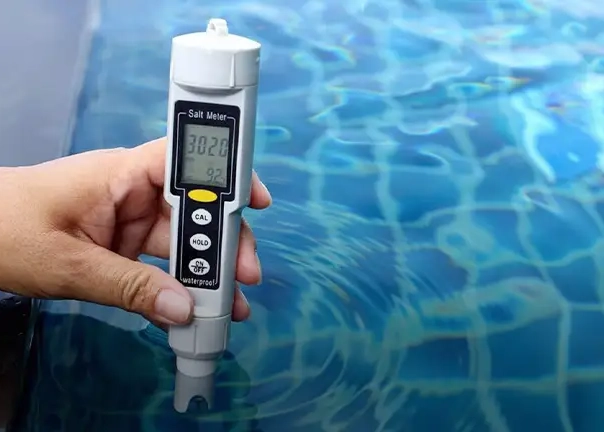
Regular Water Testing
Test your Hot Tub water regularly to ensure it is properly balanced and sanitised. Use reliable testing methods, such as test strips or a testing kit, and adjust the water chemistry as needed.

Bather Load Considerations
If you frequently have a high bather load or host gatherings in your Hot Tub, consider increasing your maintenance frequency. More frequent testing, shocking, and filter cleaning may be necessary to maintain water quality.
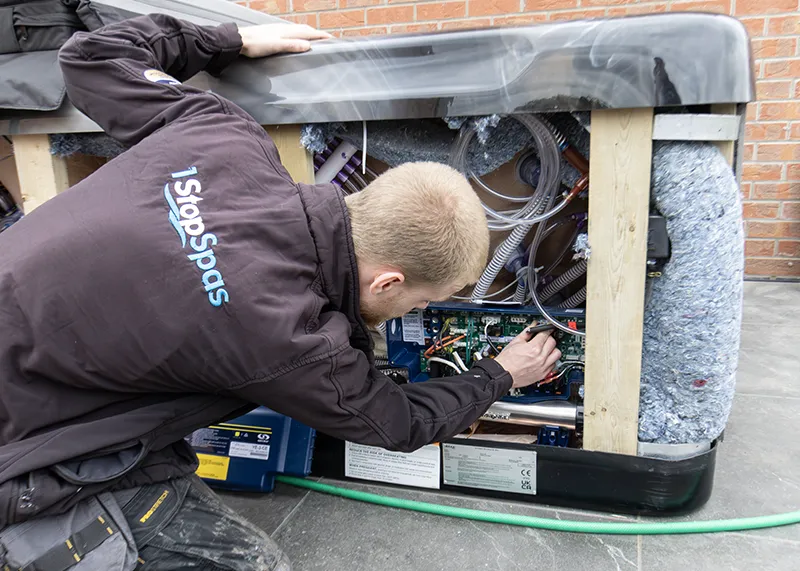
Professional Servicing
Periodically, it’s recommended to have your Hot Tub serviced by professionals. They can perform a thorough inspection, clean hard-to-reach areas, and address any underlying issues or concerns.

Educate Users
If you have multiple users or guests using your Hot Tub, provide them with basic guidelines for Hot Tub use and maintenance. This includes showering before entering the Hot Tub, avoiding lotions, oils, fake tan, and not introducing foreign objects into the water.
Part 3 – A Typical Hot Tub Maintenance Schedule
Having a regular Hot Tub maintenance schedule is vital for keeping your Spa in optimal condition. Adhering to a regular maintenance schedule will ensure that your Hot Tub remains in optimal condition, providing you with years of relaxation and enjoyment.
Maintenance schedules can vary depending on usage but will usually look something like this:
Check the water chemistry (pH, sanitiser levels etc.) daily where possible but at least every three days.
Weekly for maximum performance and to prevent dirt build up.
Weekly or as and when needed.
Monthly in Hot Tub filter cleaner.
Once a month unless it’s noticeably dirty.
Make sure all the jets are working correctly and aren’t blocked each month.
Ideally every month but at least every three months for domestic use.
At least every three months for domestic but more often with heavy use.
A professional service each year will help identify any problems and increase the lifespan of your Hot Tub.
Once a year if it’s not done as part of a professional service.
Like above, annually unless it’s done in a professional service.
Conclusion: Enjoying Your Well-Maintained Hot Tub
Maintaining your Hot Tub doesn’t have to be daunting. By following a regular maintenance routine, you can keep your Spa clean, safe, and in optimal condition. From balancing water chemistry and sanitising the water to cleaning filters and maintaining the shell, each aspect of Hot Tub maintenance plays a crucial role in ensuring an enjoyable and long-lasting Spa experience. Remember to adhere to a maintenance schedule, test your water regularly, and address any issues promptly. With proper care and attention, your Hot Tub will continue to provide relaxation and rejuvenation for years to come.





